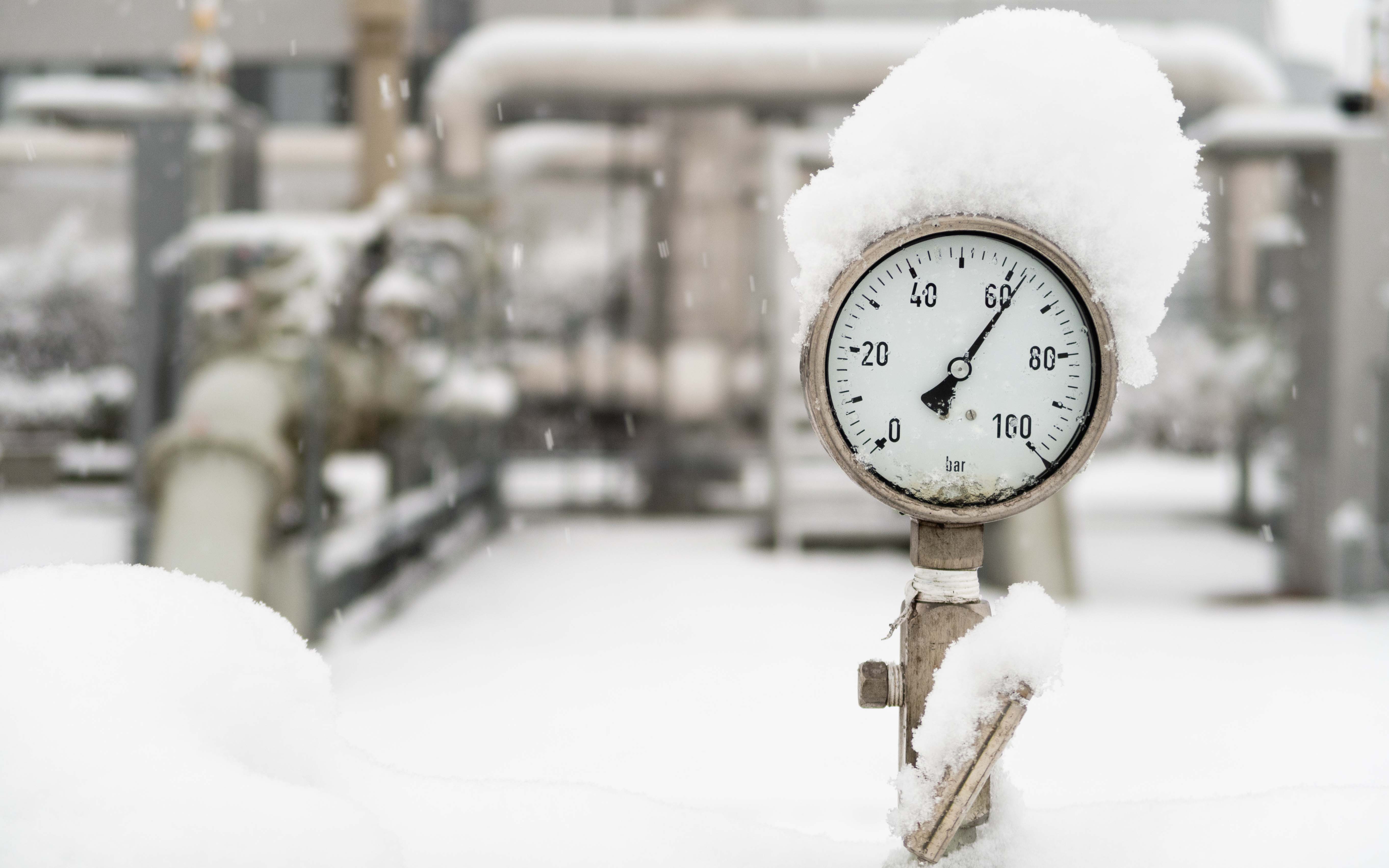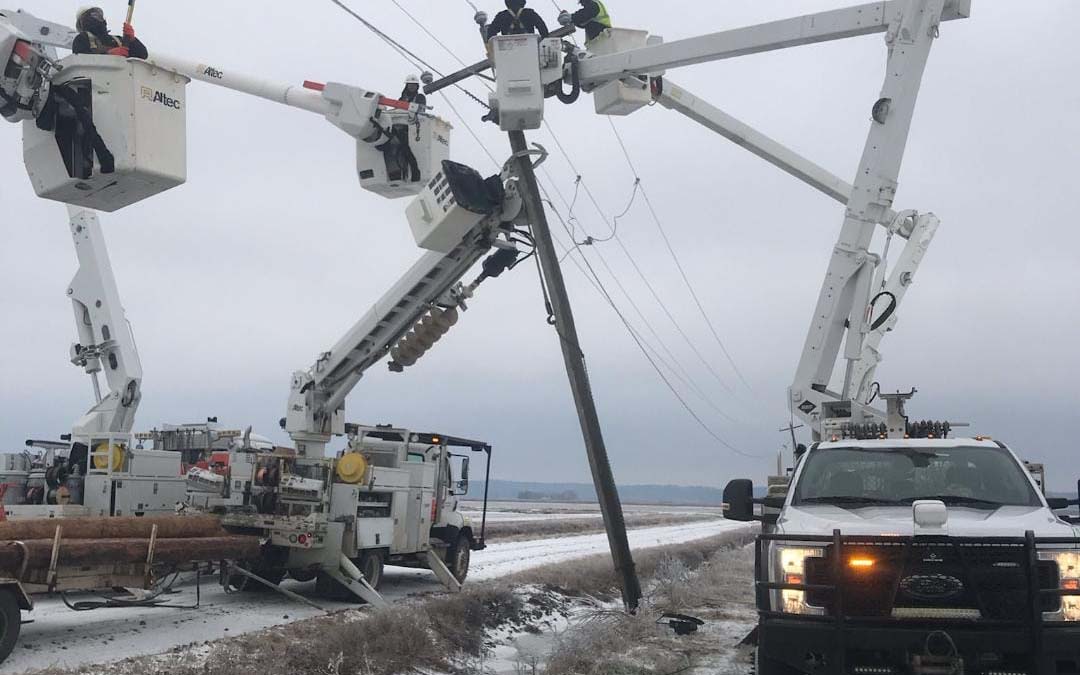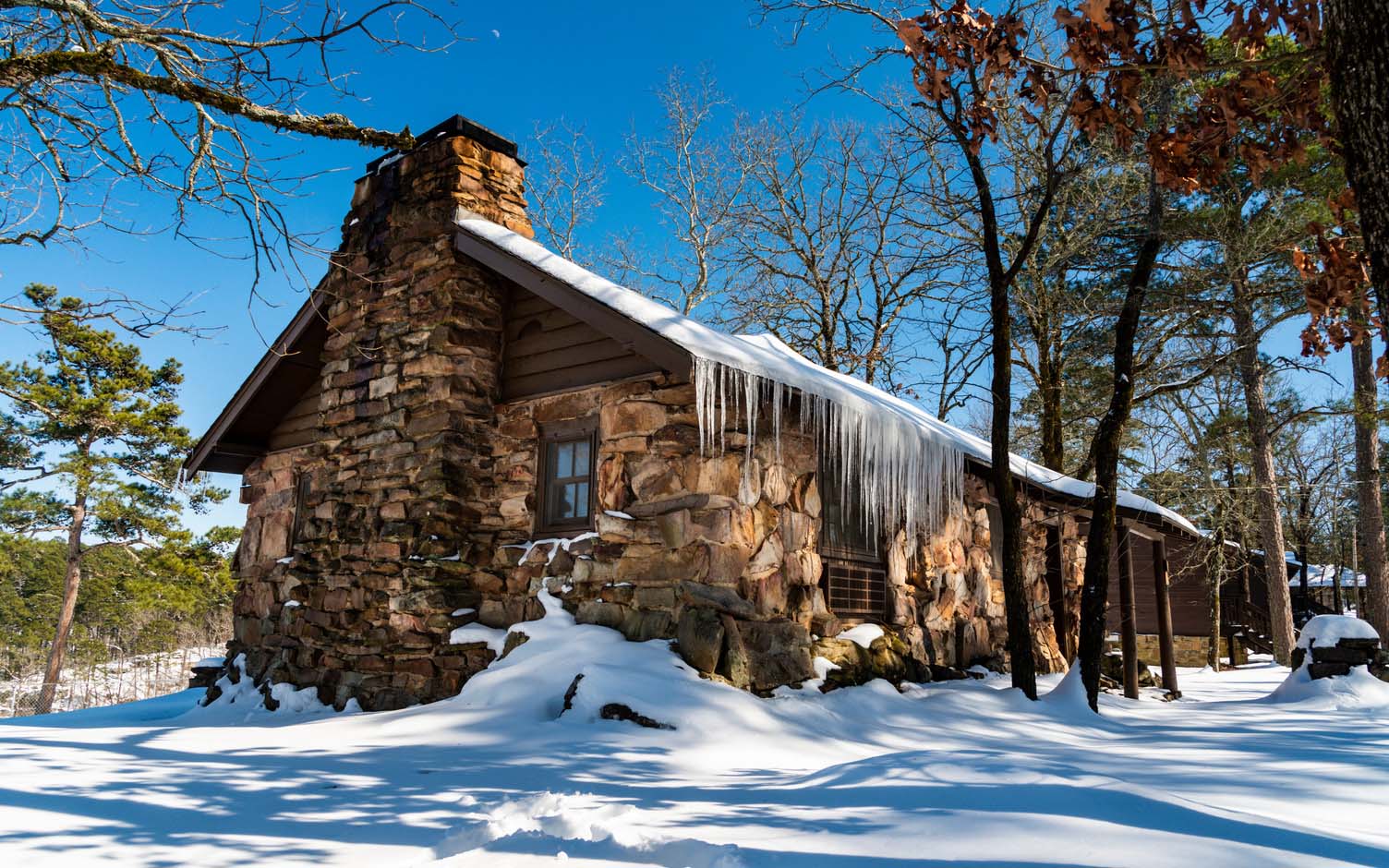Arkansas electric bills expected to rise this winter
November 1-7, 2021
By Wesley Brown
If inflated prices for food, clothing and shelter were not enough for most consumers heading into the 2021 holiday shopping season, the U.S. Energy Information Administration’s (EIA) “Winter Fuels Outlook” predicts that nearly all U.S. households will all see higher electric bills this winter.
Nationally, the EIA said forecast expenditures for the winter season are based on our expectations of high retail energy prices, many that are already at multiyear highs and slightly more energy consumption per household than in the previous winter. Notably, energy prices reached multiyear lows last year because of the COVID-19 pandemic, Energy Department officials said
“Retail energy prices for several fuels are already at their highest point in several years,” said the Energy Department’s economic and data research group. “Although price increases over the past year can be attributed to several factors, the main reason wholesale prices of natural gas, crude oil, and petroleum products have risen is that fuel demand has increased from recent lows faster than supply, in part, because of economic recovery after the first year of the COVID-19 pandemic. To varying degrees, these increases in wholesale prices are being passed through to consumers.
According to the EIA, which is the statistical and economic research arm of the U.S. Energy Department, changes in wholesale propane and heating oil prices pass through to retail prices much more quickly than changes in wholesale natural gas or electricity prices pass through to customers’ rates. In addition, many propane and heating oil users mostly on the East Coast buy supplies before winter and refill as needed.
“When forecasting expenditures, we assume the consumer’s cost for the fuel is the retail price at the time they use the fuel rather than the actual purchase price,” EIA officials said.
Under the newly released forecast, the EIA estimates nearly half of all U.S. households heat primarily with natural gas, including Arkansas and other southern states. Energy Department forecasters expect households that use natural gas as their primary space heating fuel will spend $746 this winter, 30% more than they spent last winter. This increase in natural gas expenditures comes from both higher expected prices and consumption.
The winter forecast that an average of 20.8 billion cubic feet per day will be consumed by U.S. residences this winter. For households that use natural gas as their primary space heating fuel, average household consumption for the winter will total 58 thousand cubic feet (Mcf), up 2% from last winter.
“We forecast a 3% increase in average natural gas consumption per household in the Northeast, Midwest, and West. We expect residential natural gas consumption in the South to be about the same as last year,” said the EIA, noting that residential natural gas price will average $12.92/Mcf, up from an average of $10.17/Mcf last winter. “We forecast higher residential prices because of higher commodity prices for natural gas in much of 2021 compared with 2020, when we had historically low natural gas prices.”
Nationally, changes in natural gas spot prices generally pass through to residential customers relatively slowly. Some state utility regulators set the rates that utilities can charge for natural gas deliveries a year or more in advance of billing to reflect the cost of wholesale natural gas that utilities purchased over many months.
Arkansas rate adjustments
In Arkansas, the state Public Service Commission (APSC) in early March requested that electric and natural gas utilities rate recovery costs and schedules following the historic arctic cold snap in February that led to rolling blackouts and dramatic increases in customer energy demand the state’s electric and natural gas infrastructure.
Under state law, utilities can spread out costs over several months or years, but PSC officials urged the natural gas and electric companies operating in Arkansas to be mindful of the potential impact on customers. Most utilities have since filed plans in with the PSC to defer costs over several months to keep customers’ winter bills from skyrocketing.
For instance, Arkansas’ three natural gas companies, CenterPoint Energy, Arkansas Oklahoma Gas Corp. (AOG) and Black Hills Energy, all indicated in the spring that they were working closely with the APSC) to determine the best path forward to manage the impact of increased natural gas costs for customers.
In late April, Black Hills said it would begin recovering the natural gas costs incurred during the February “polar vortex period” as an additional line-item on customer bills beginning in June, subject to PSC approval. While the recovery of natural gas costs typically occurs over twelve months, Black Hills Energy said it would instead proposed recovery of these natural gas costs over the next 5 years to reduce the impact to customer bills.
As proposed, the average residential customer in Arkansas will see an increase of $11.10 per month. At the end of fiscal 2020, the South Dakota utility operator had 178,281 natural gas customers serving more than 100 communities in Arkansas, most across the Northwest part of the state.
“The financial well-being of our customers is important to us, and we recognize how these additional costs can impact a family budget” said Chad Kinsley, vice president of Black Hills’ Arkansas operations in Fayetteville. “We remain committed to supporting reasonable energy costs. Spreading the cost over the course of 5 years will result in a lessened impact to customers’ bills,” said Kinsley.
Houston-based CenterPoint Energy, which has more than 7 million metered customers in Arkansas, Indiana, Louisiana, Minnesota, Mississippi, Ohio, Oklahoma and Texas, has not yet publicly indicted it will hike winter gas prices in Arkansas. However, the Texas natural gas giant has warned customers in Ohio, Indiana and other states that they may see a significant increase in their natural gas bills compared to year ago, due primarily to a rise in spot natural gas prices.
“In the event we experience normal winter weather this heating season, coupled with a significant increase in natural gas prices, customers should expect an increase in their bills,” Richard Leger, vice president of CenterPoint natural gas distribution in Indiana and Ohio, said on Oct. 14. Leger noted that the average CenterPoint Energy customer in those states paid $81 per month for natural gas service during the 2020-2021 heating season for a five-month total of about $406.
A year ago, CenterPoint’s 400,000 natural gas customers in Arkansas saw lower rates due to a mild winter and the economic effects of the COVID-19 pandemic that reduced both natural gas production and consumption.
On April 29, however, the multistate natural gas distributor announced the sale of its Arkansas and Oklahoma natural gas LDC assets to Centennial, Colo.-based Summit Utilities for $2.15 billion in cash, including recovery of $425 million in cash of unrecovered storm-related incremental natural gas costs incurred in February 2021.
The deal with Summit, the parent company of AOG, includes approximately 17,000 miles of main pipeline in Arkansas, Oklahoma, and Texarkana serving more than half a million customers. That deal is anticipated to close by the end of this year, subject to the normal state and federal regulatory approvals.
CenterPoint is just over two years down the road from its $6 billion acquisition of Evansville, Ind.-based Vectren, which created a multistate energy conglomerate with regulated electric and natural gas utility businesses in eight states that serve more than 7 million metered customers. The combined also included other energy related businesses with operations in nearly 40 states.
CenterPoint President and CEO David Lesar, who took over the reins of the company in June 2020, said the deal with Summit was part of the utility giant’s plans to sell off assets as a part of its turnaround strategy after the Vectren acquisition, which has disappointed Wall Street and key investors amid the ongoing pandemic.
“Summit Utilities is a seasoned operator of utility assets in the region and the ideal company to acquire these assets. We are excited that Summit has existing businesses in Arkansas and Oklahoma, which will facilitate the transition process for our employees and customers,” said Lesar.
For its part, Summit said the integration of CenterPoint’s Arkansas and Oklahoma operations will benefit from the utility’s growth plans in the region. In 2017, Summit expanded its footprint to Arkansas and Oklahoma with the acquisition of Fort Smith-based Arkansas Oklahoma Gas Corporation.
“Today, we couldn’t be more excited to announce our plans to serve more communities in these two great states with the acquisition of CenterPoint’s Arkansas and Oklahoma gas distribution systems,” said Summit President and CEO Kurt Adams said in April.
Privately held Summit, which still operates under and AOG brand in Arkansas and Oklahoma, had been owned by the family of Witt Stephens Sr. of Little Rock for 72 years. Summit also owns and operates natural gas distribution subsidiaries in Colorado, Missouri and Maine. It has not yet announced its plans to recovery winter storm costs for the nearly 60,000 natural gas utility customers it serves in Arkansas and Oklahoma.
On the electric utility side, Entergy Arkansas and Arkansas Electric Cooperatives Corp. (AECC) also have indicated they will recover costs associated with the February winter snap over several months. Entergy Arkansas is a subsidiary of New Orleans-based Entergy Corp, which serves about 730,000 in 63 of Arkansas’ 75 counties.
In Entergy’s 8K filing with the federal Securities Exchange Commission in August, company officials said fuel and purchased power costs from the winter storms in February were up 263% to $145 million compared to only $40 million a year ago. Entergy Arkansas spokeswoman Brandi Hinkle told The Daily Record that most of those costs will be spread out over 21-month period, softening the impact to customers across the state.
At AECC, the wholesale power supplier for 17 electric distribution cooperatives across the state of Arkansas is also able to recover the actual cost of fuel and purchased power through a fuel adjustment clause approved by the PSC, along with a separate rider to recover expenses related to participating in the energy markets of grid operators Southwest Power Pool of Little Rock and Carmel, Ind.-based Midcontinent Independent System Operator, or MISO.
According to AECC’s second quarter financial report, the statewide electric cooperative’s operating revenues for the six months ended April 30 increased by nearly $192 million above year ago levels. “During this time, the prices AECC paid for fuel costs and market costs from SPP and MISO spiked to unprecedented levels,” company officials said.
Today, AECC service areas cover more than 60% of the land area in Arkansas and provides electric to more than 600,000 homes, farms and businesses. AECC spokesman Rob Roedel said natural gas that was priced at $1.98 per million British Thermal Units (MMBtu) rose to approximately $220 per MMBtu on Feb. 16, pushing total additional fuel costs for the 17 electric cooperatives across the state to more $93 million above normal during the winter storms. AECC’s board of directors authorized the not-for-profit cooperative to implement a nine-month delayed billing period for the excessive wholesale fuel costs experienced in February. AECC is projecting wholesale power cost will be at least 10% above normal for the upcoming winter season.
“I would urge consumers to contact their local electric cooperative for energy-saving tips to keep their electric costs down,” said Roedel.
Arkansas energy profile
According to the EIA, natural gas exceeded coal for the first time as the leading source of electricity generation in Arkansas and accounted for almost one-third of the state’s net generation. Entergy Arkansas’ nuclear power plant in the Russellville generated 28% of in-state electricity in 2020 and is the second-largest power plant in the state by generating capacity.
Despite the rising winter prices this winter, the Natural State still ranks among the five states with the lowest average electricity retail price with half the state’s households relying on electricity for heating, according to EIA’s Arkansas energy profile.
Nationally, the Consumer Price Index in September rose 0.4% in September on a seasonally adjusted basis after rising 0.3%t in August, the U.S. Bureau of Labor Statistics reported earlier this month. Over the last 12 months, the “all items” index has increased 5.4% from a year ago, which is well above the Federal Reserve’s Open Market Committee’s 2% inflation target.
Overall, the indexes for food and shelter rose in September and together contributed more than half of the monthly all items seasonally adjusted increase. However, the energy index increased 1.3%, with the gasoline index rising 1.2%. For the past 12 months, the energy index has jump a whopping 24.8% as consumers prepared for holiday travel and the all-important year-end Christmas shopping season.
In addition to the rising energy bills, a recent surged in pump prices has pushed the national average price for a gallon of gasoline to hit $3.38. According to the former American Automobile Association (AAA), gasoline prices have gone up every day in the past 27 days, adding approximately 20 cents to the cost of a gallon of regular unleaded. In Arkansas, the cost for a gallon of regular unleaded has jumped to $3.06, up 22 cents from a month ago and $1.21 higher than Halloween weekend a year ago.
“With the U.S. economy slowly recovering from the depths of the pandemic, demand for gas is robust, but the supply is tight,” said Andrew Gross, AAA spokesperson. “We haven’t seen prices this high since September of 2014.”
PHOTO CAPTIONS:
1. and 2. Frosty Fuel Forecast - Higher electric bills forecasted for upcoming winter season due to higher demand and rising prices for natural gas, crude oil and heating fuels.
3. Arkansas Electric Cooperatives workers repair power lines during last winter's winter cold snap in February. (Photo provided by AECC)
4. The U.S. Energy Information Administration (EIA) recently forecasted that U.S. households will spend more money on energy this winter, especially households that primarily heat with natural gas, propane or heating oil.
5. Retail natural gas prices in the U.S. are expected to rise from $10.17 per thousand cubic feet (Mcf) last winter to $12.93 per Mcf this season, the highest price since the 2005–06 winter average, the EIA said.







